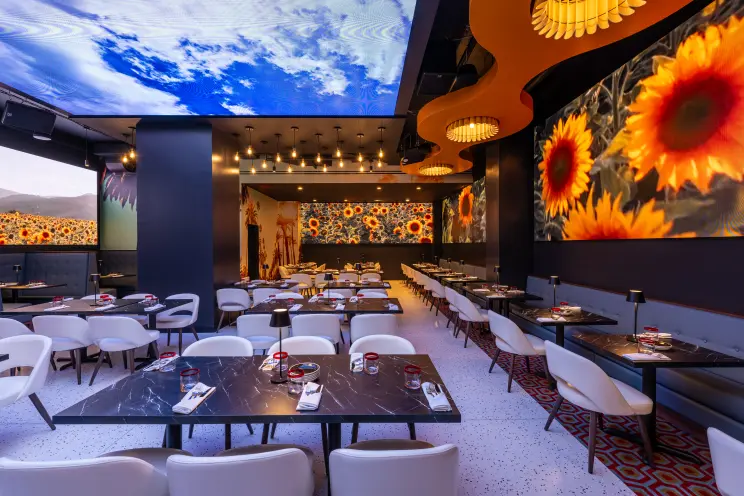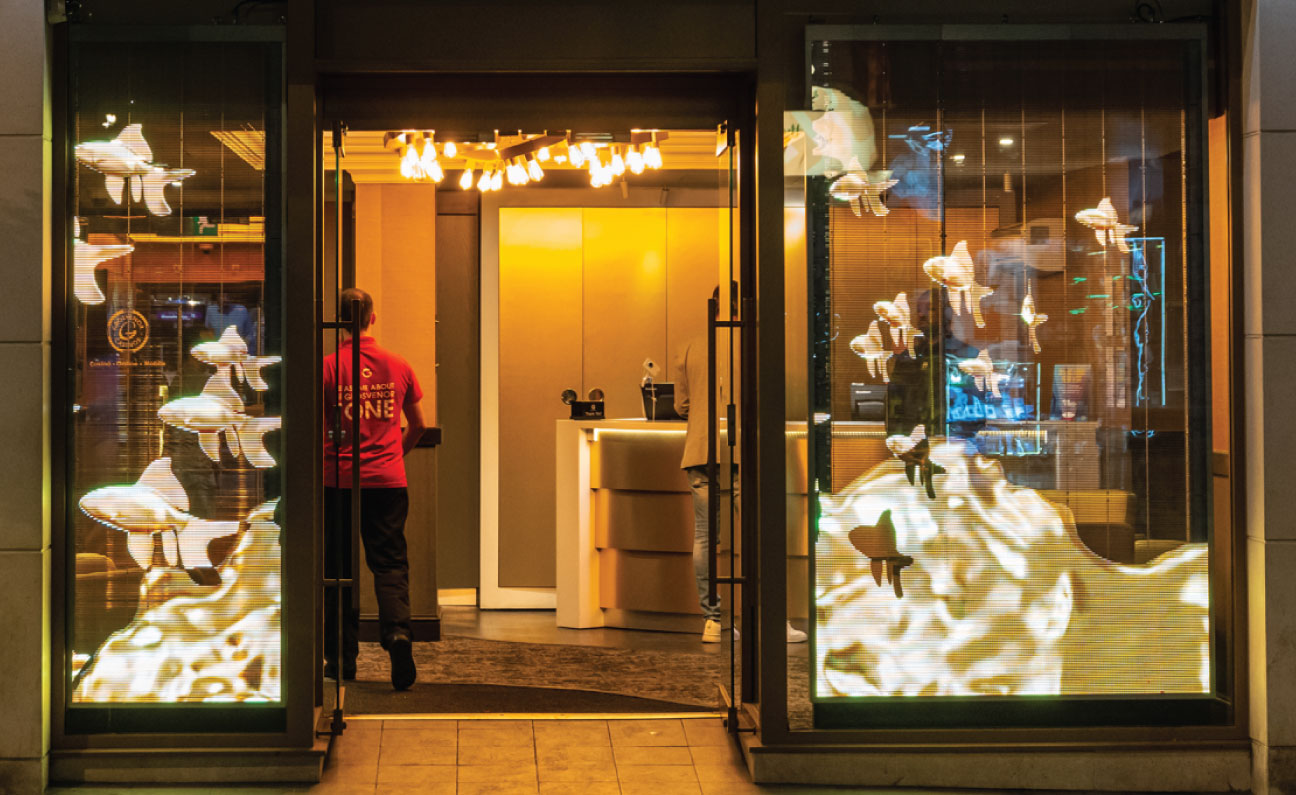

Transparent screens are transforming how brands engage with customers, offering an immersive experience that goes beyond traditional displays. From storefront windows to indoor advertising, here are the top ways transparent screens are redefining retail and advertising:
Transparent displays can turn storefront windows into engaging screens that project stunning visuals or advertisements without blocking the view into the store. Retailers benefit from the eye-catching “wow” factor, all while allowing natural daylight to pass through. Passersby can see both the interior of the shop and vivid 3D video content, making window-shopping more dynamic and visually appealing.

Interactive transparent screens allow customers to see products placed behind the screen while also accessing digital content. For example, a jewelry store can showcase pieces behind a screen while offering detailed product information or promotional videos directly on the display. This overlay of digital and physical enhances the customer experience, offering insights without interrupting the view of the actual product.
For large-scale advertising, transparent screens can cover entire building sides, creating a canvas for captivating visuals that reach wide audiences. They maintain natural lighting for building occupants while transforming facades into dynamic advertising spaces. This technology enables impressive, large-format ads without the bulk of traditional billboards, providing new revenue opportunities for property owners.
Transparent displays can replace static decor in malls and shopping centers, turning indoor spaces into vibrant, digital landscapes. Retailers can advertise directly to mall-goers with high-resolution displays layered against the surroundings, creating a unique blend of art and information. As the displays are nearly invisible, they blend with the space, adding a touch of futurism and interactivity to commercial settings.
Transparent glass billboards, mounted in open spaces, offer a new medium where advertising meets public art. These installations can showcase 3D effects against the sky or other scenic backdrops, enhancing urban landscapes. This style of advertising is particularly impactful as it stands out and often becomes a conversation piece, adding value through both aesthetic appeal and innovative marketing.
Transparent displays are also ideal for temporary pop-up shops and events, where brands want to make a memorable impression. The screens allow brands to project real-time interactive content and immerse visitors in storytelling that blends with the physical space. For event-driven retail or experiential marketing, transparent screens provide a unique, memorable way to engage an audience.
Transparent screens on vehicle windows bring a futuristic edge to transit advertising. These screens can display ads and information to pedestrians while still allowing passengers an unobstructed view. This new method of advertising reaches more eyes in high-traffic areas and enhances brand visibility while offering a sleek, modern feel.
Transparent displays provide exciting new ways for retailers and advertisers to captivate audiences, blending digital and physical worlds seamlessly. As they become more widely adopted, we’re sure to see creative applications that make advertising a more immersive, engaging experience.